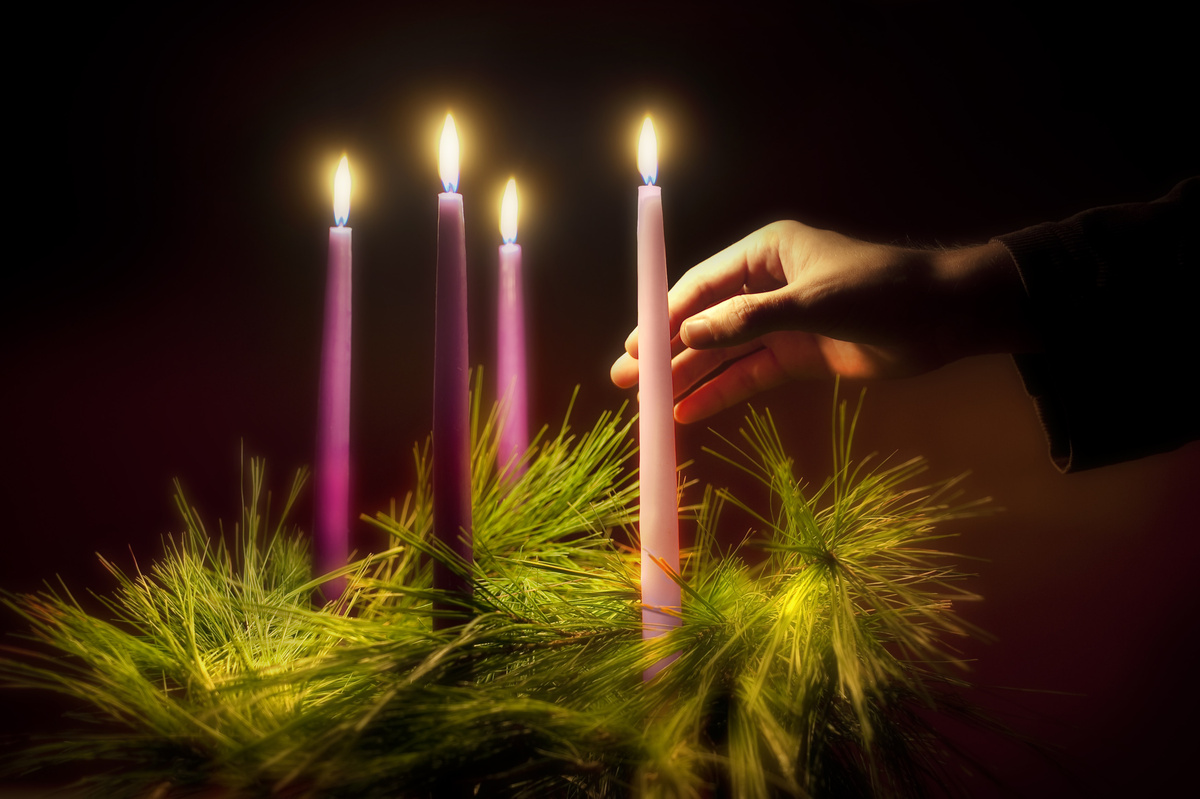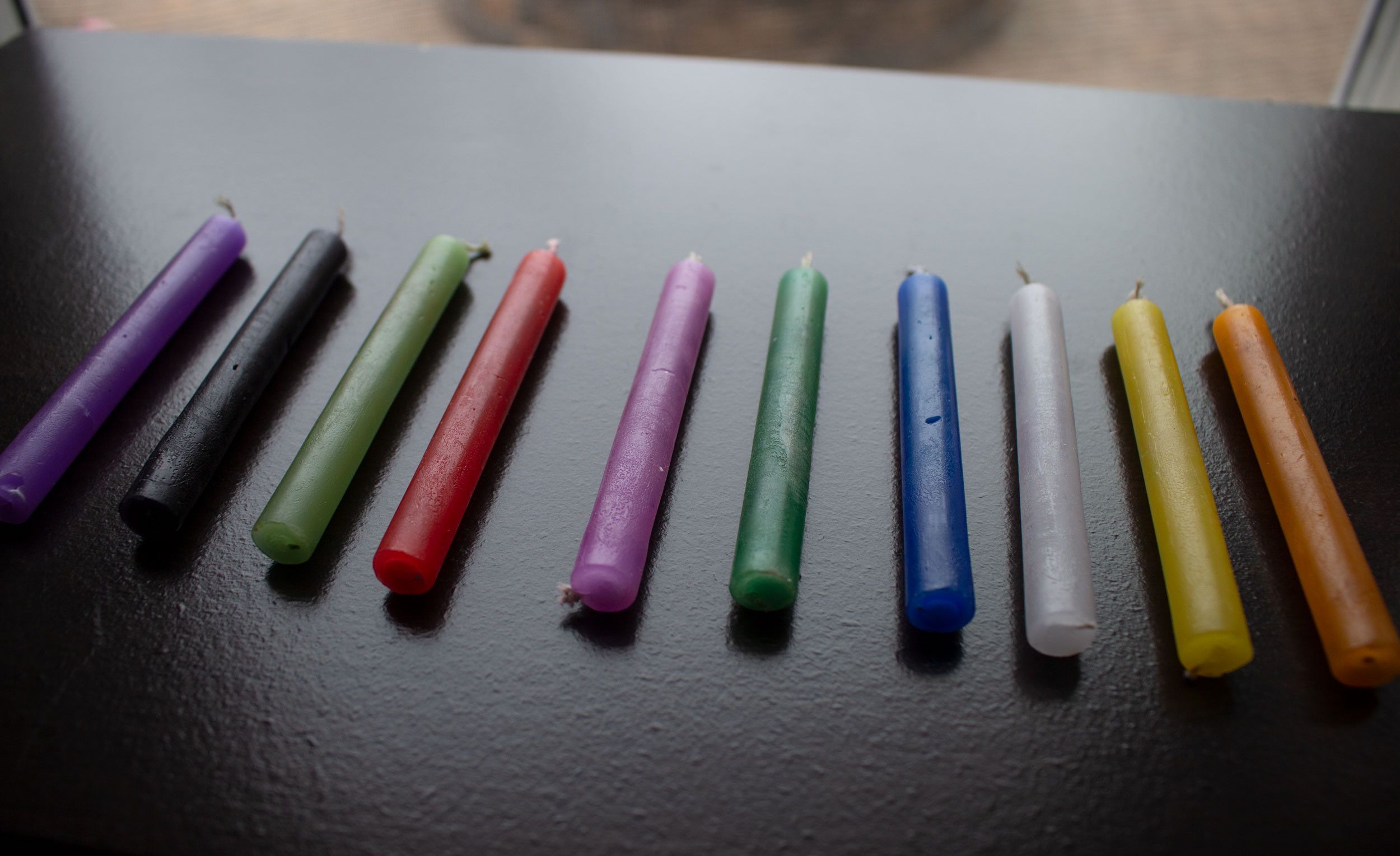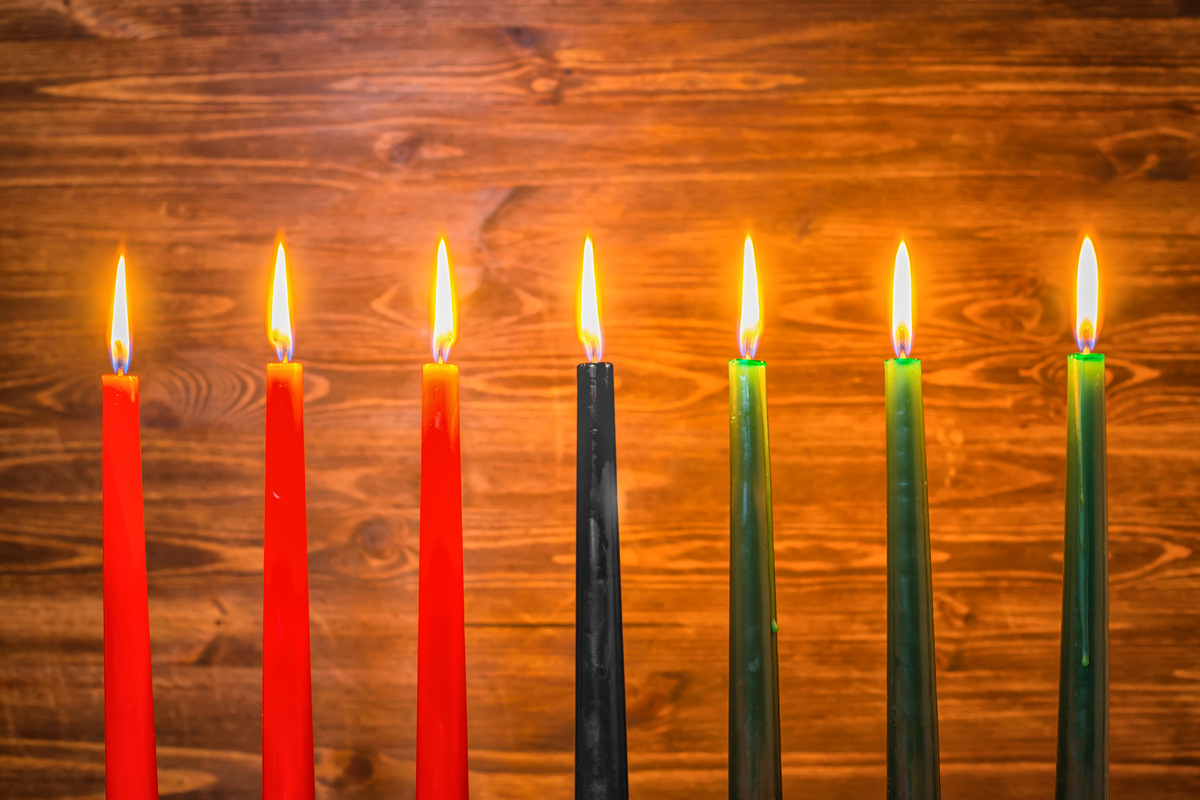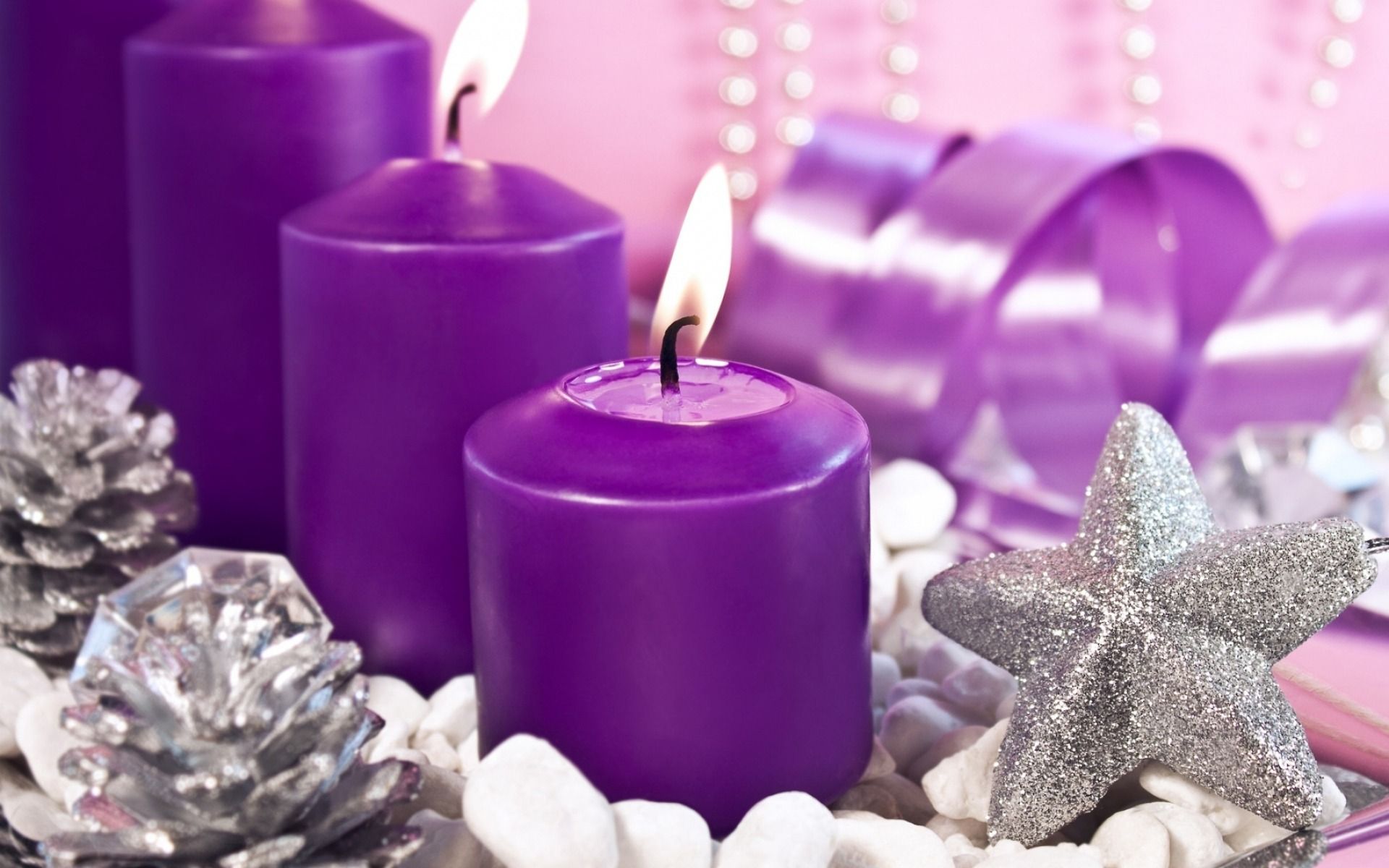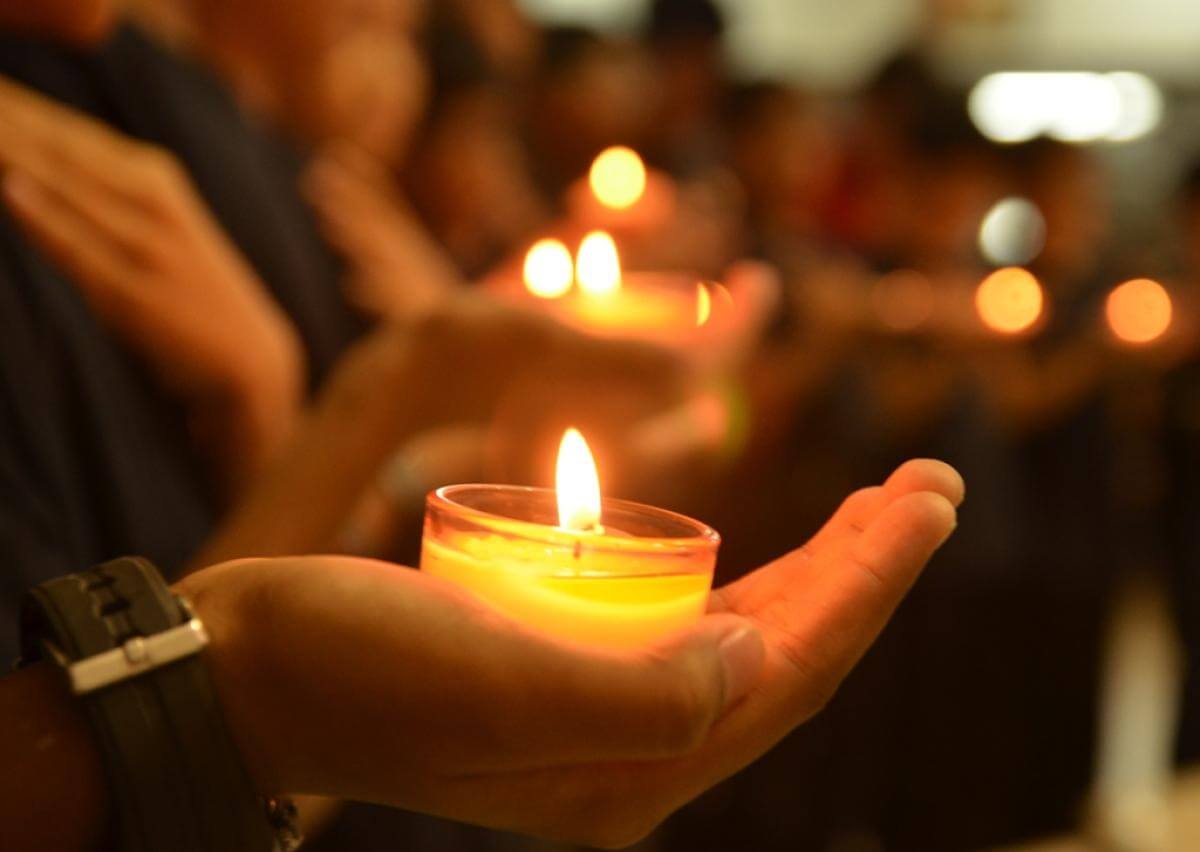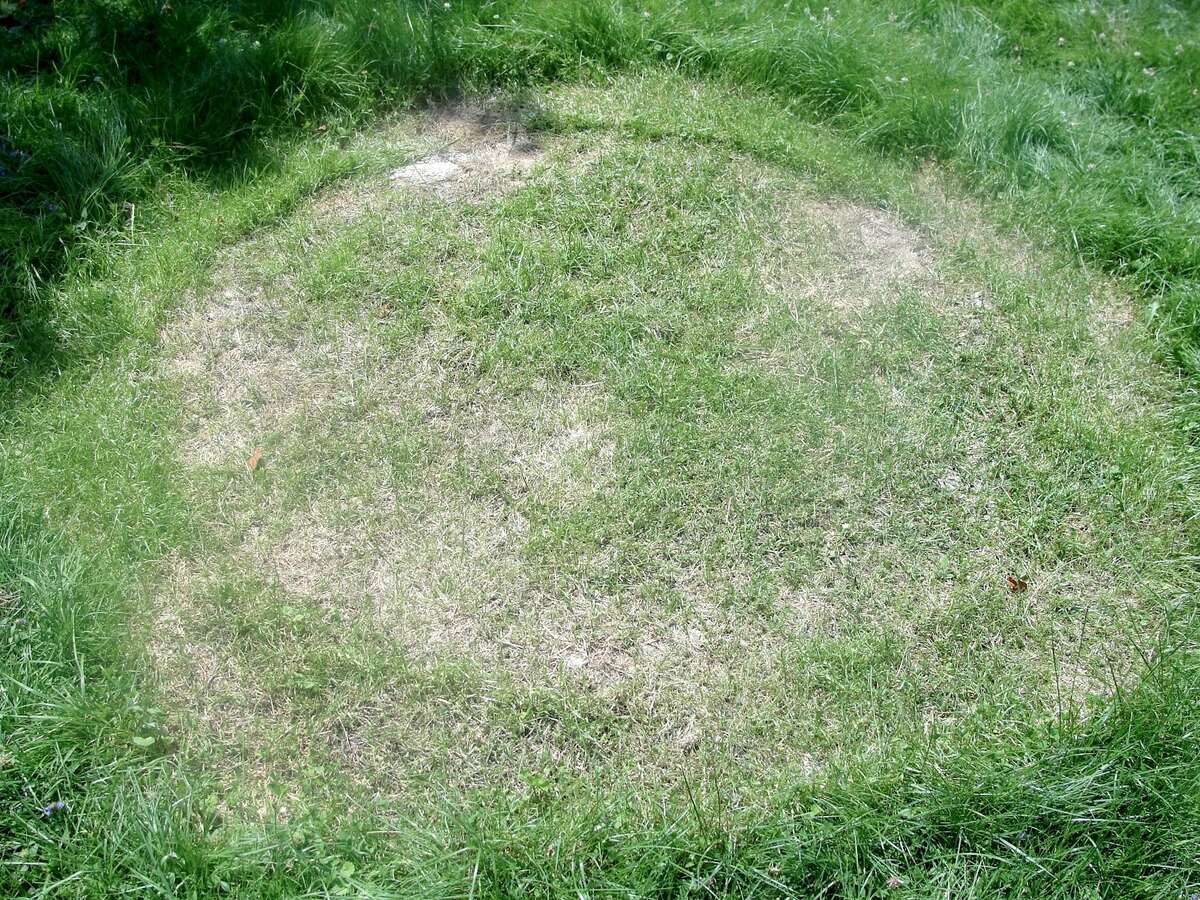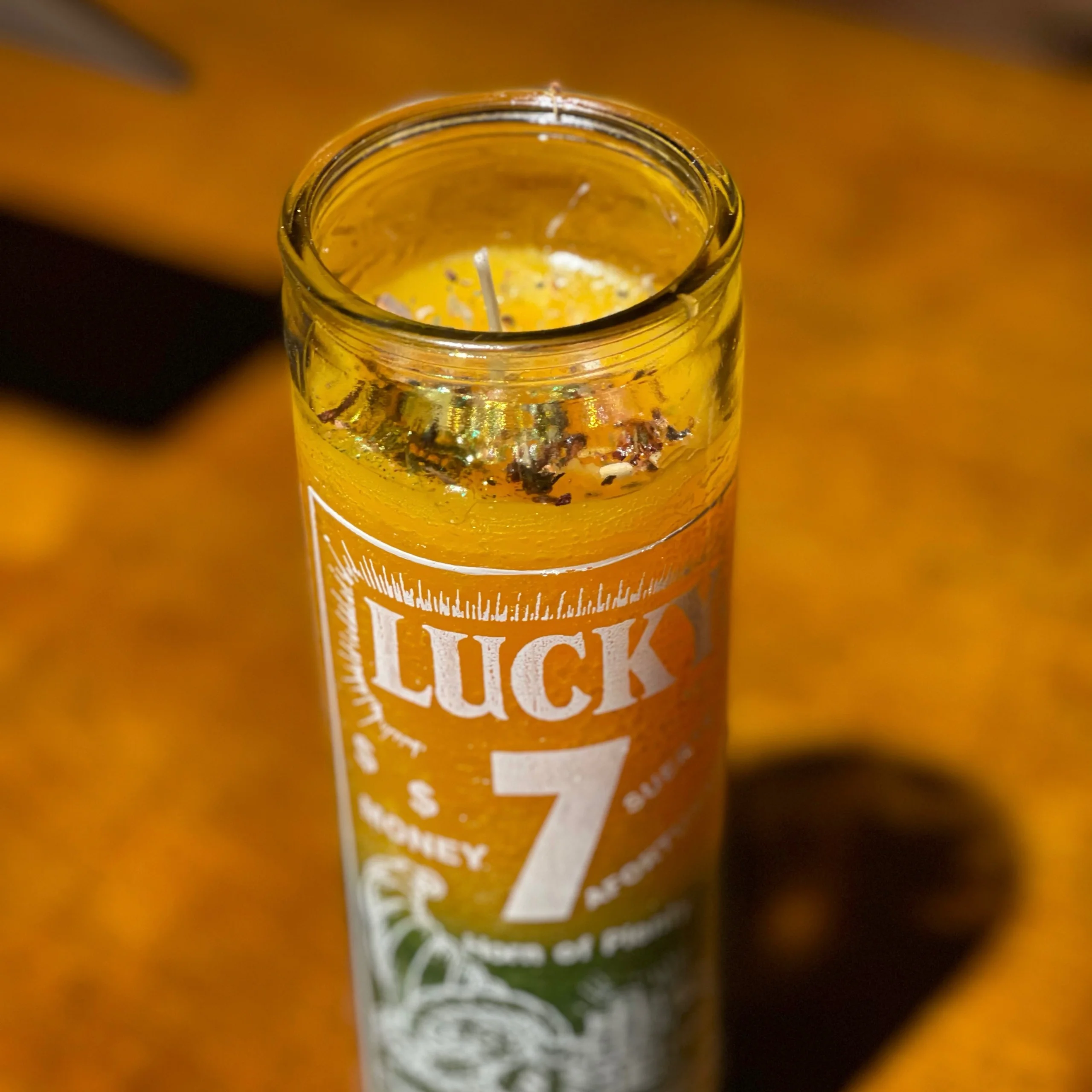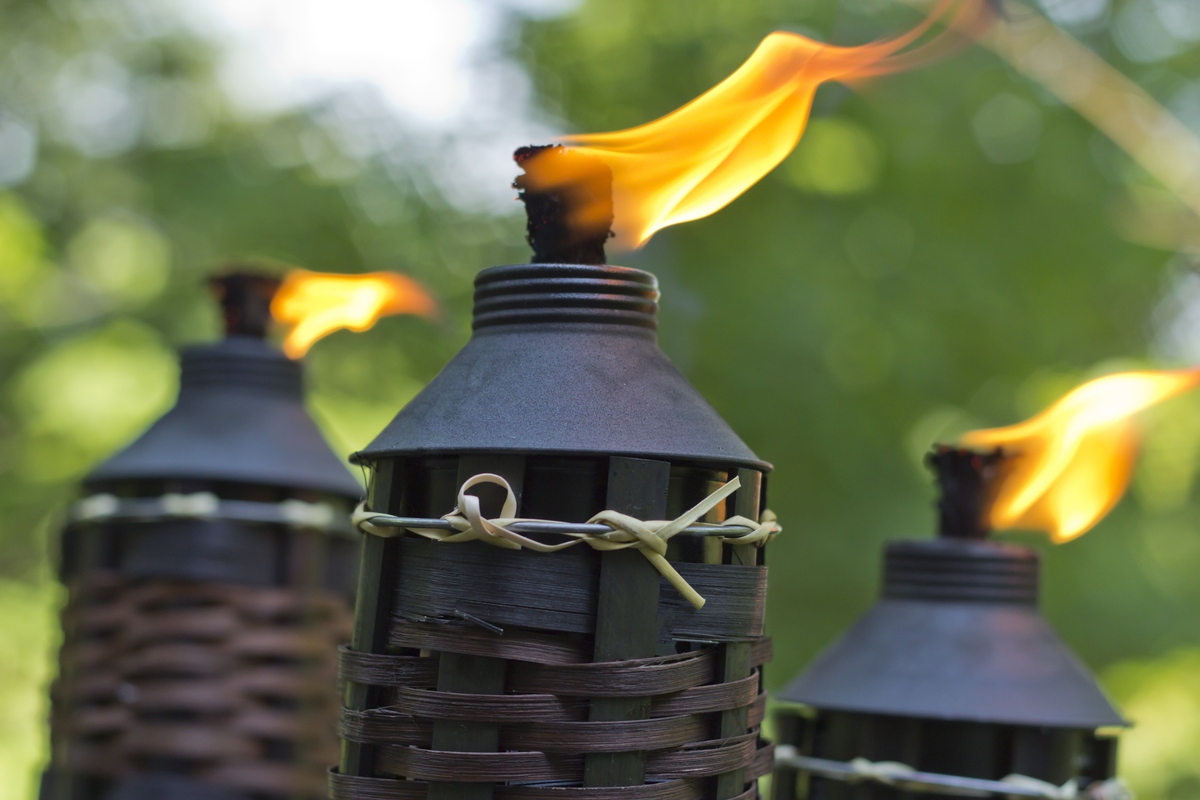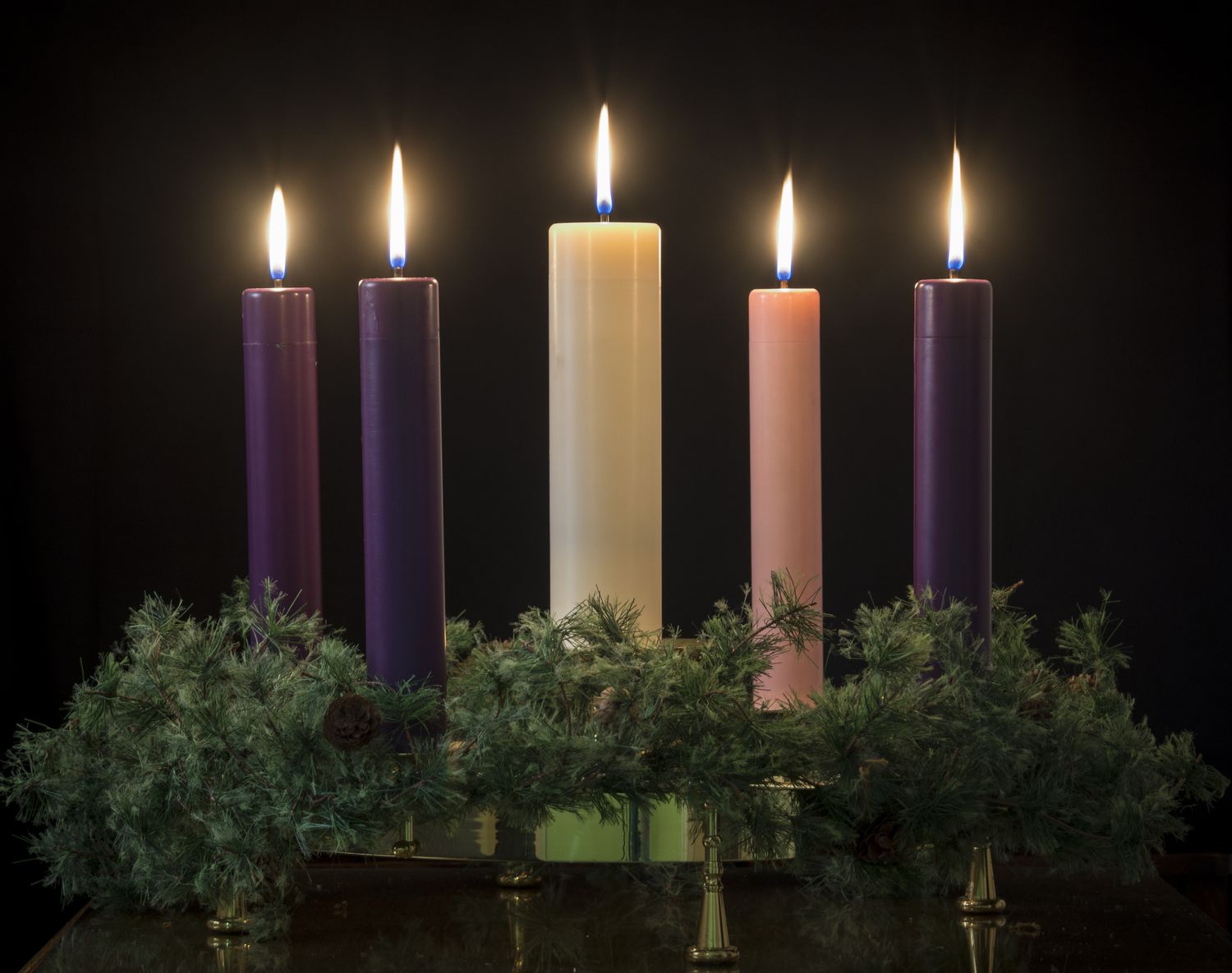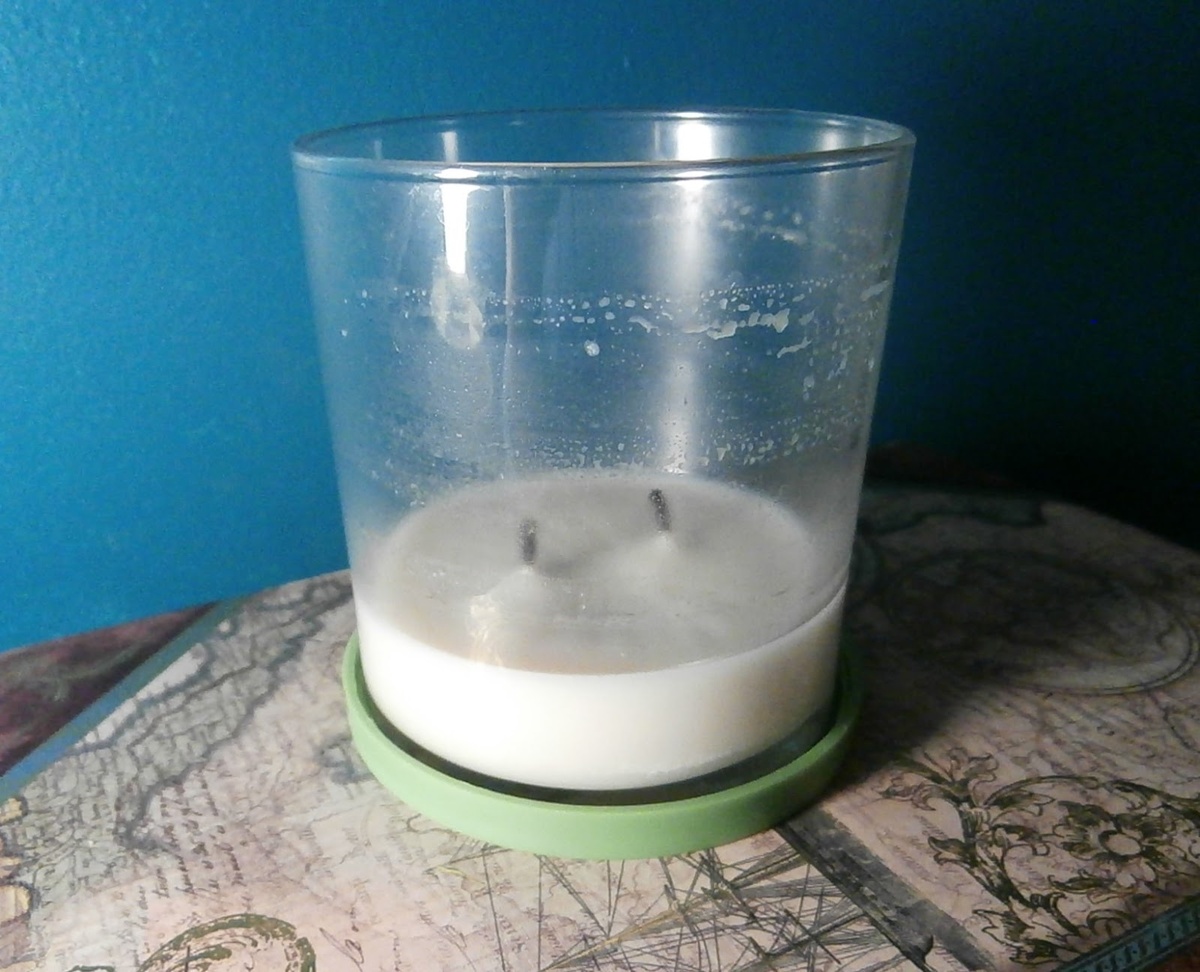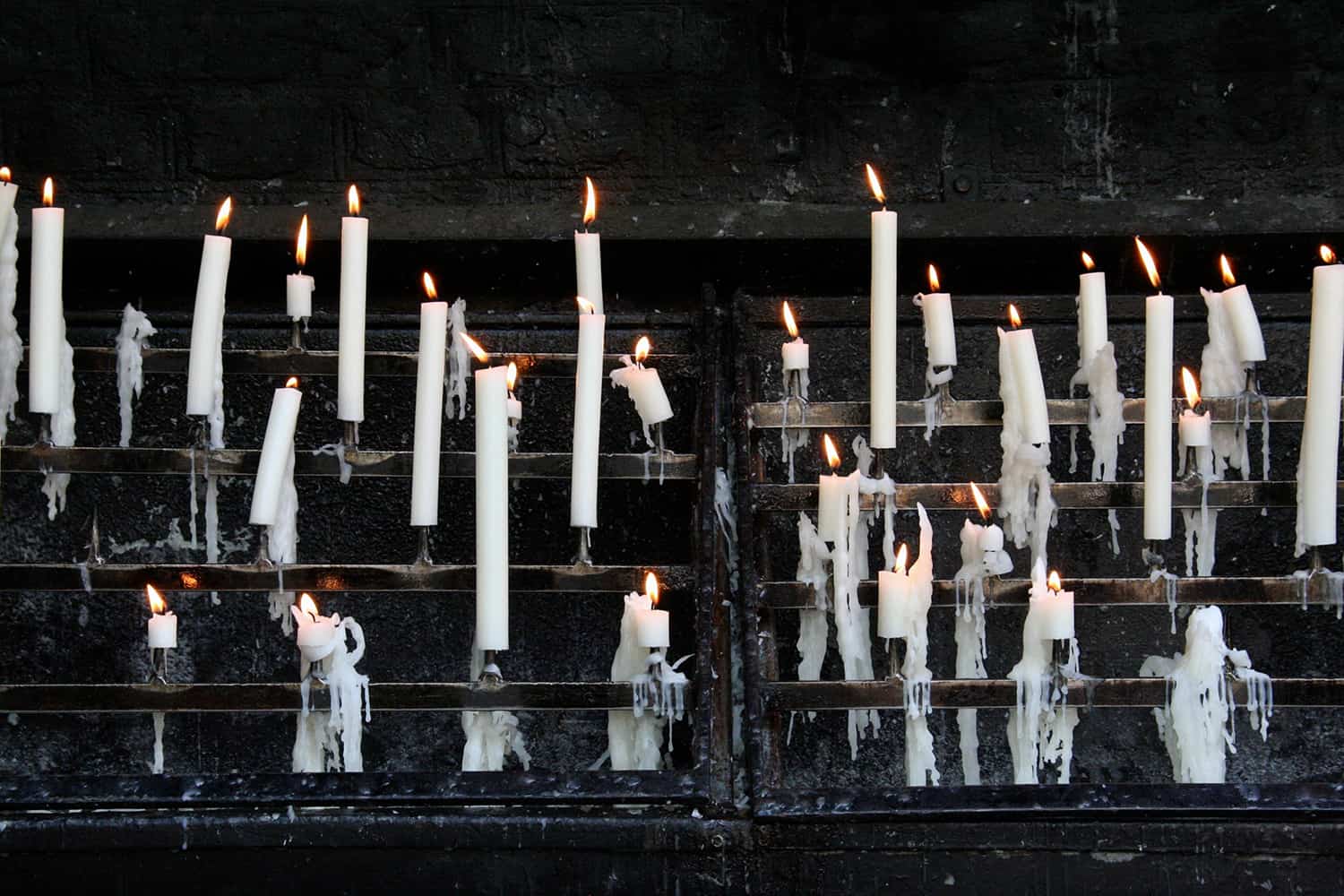Home>Articles>What Do The Candles Represent In Day Of The Dead
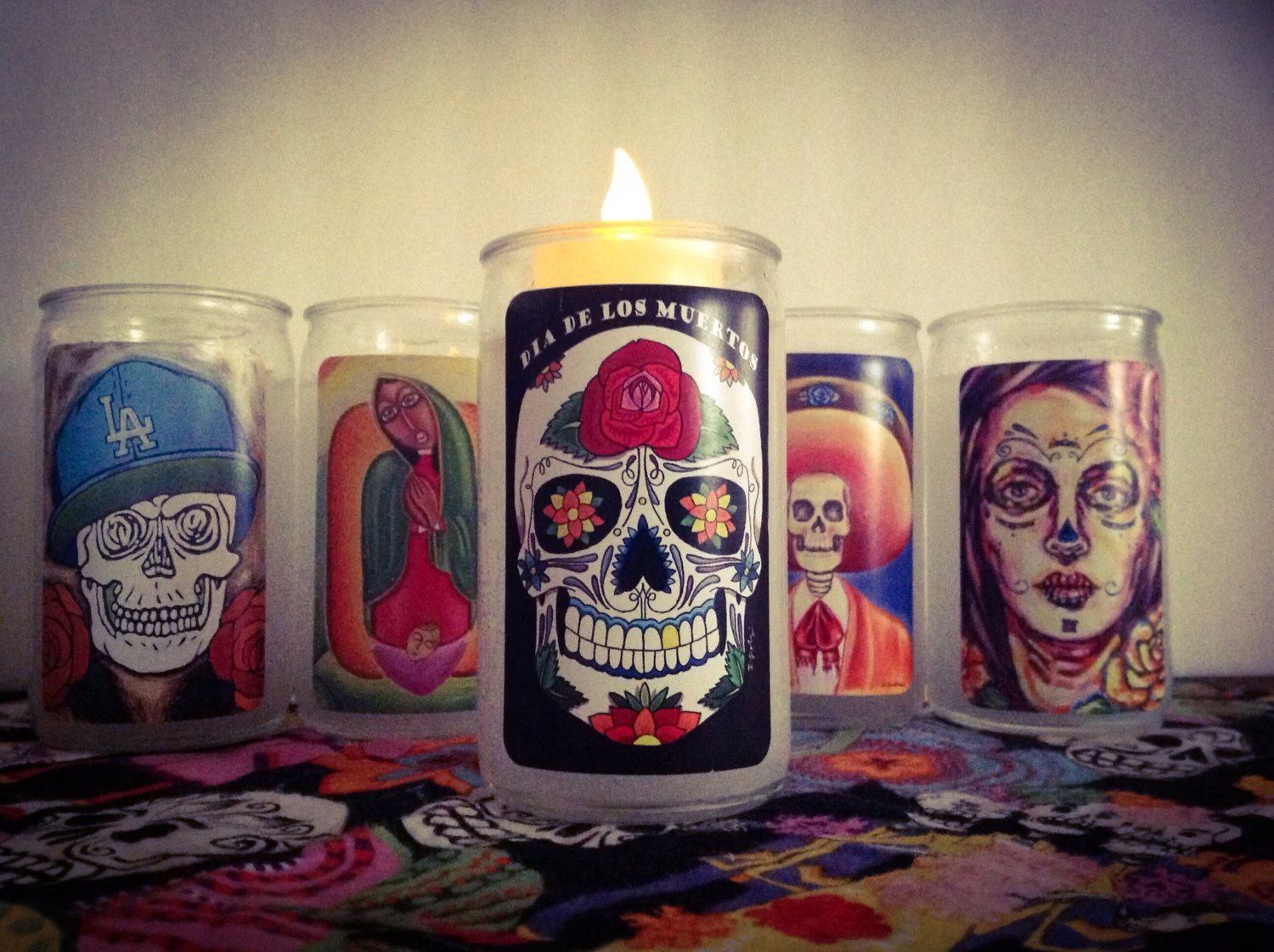

Articles
What Do The Candles Represent In Day Of The Dead
Modified: January 9, 2024
Discover the symbolic significance of candles in the traditional Mexican holiday, Day of the Dead, through our informative articles. Explore the meaning and rituals associated with this beautiful commemoration.
(Many of the links in this article redirect to a specific reviewed product. Your purchase of these products through affiliate links helps to generate commission for Storables.com, at no extra cost. Learn more)
Introduction
The Day of the Dead, also known as Día de los Muertos, is a vibrant and deeply meaningful celebration observed in Mexico and other Latin American countries. It is a time when families gather to remember and honor their deceased loved ones, and it is filled with colorful rituals, elaborate altars, delicious food, and beautiful decorations. One of the key elements of this tradition is the use of candles, which hold great significance and play a pivotal role in the festivities.
In this article, we will explore the symbolism and significance of candles in the Day of the Dead celebration. We will delve into their role as a symbol of illumination and guidance, as a welcome beacon for ancestral spirits, as a representation of life and death, and as a tool for communicating with the departed. By understanding the importance of candles in this sacred tradition, we can gain a deeper appreciation for the rich cultural heritage behind the Day of the Dead.
Key Takeaways:
- Candles in the Day of the Dead celebration symbolize the eternal essence of the soul, guiding ancestral spirits back to their loved ones and fostering a deep spiritual connection that transcends death.
- Through the flickering flames of the candles, families communicate with their departed loved ones, creating a sacred space for reflection, remembrance, and profound spiritual communion.
Read more: What Do Orange Candles Represent
The Significance of Candles in Day of the Dead
Candles hold immense significance in the Day of the Dead celebration. They are not merely decorative elements; they serve as powerful symbols that help guide and honor the souls of the departed. Candles are believed to provide illumination and act as a guiding light for the spirits, helping them find their way back to their loved ones during this special time of the year.
During the Day of the Dead, families set up altars known as “ofrendas” in their homes or cemeteries. These altars are beautifully decorated with vibrant flowers, favorite foods and drinks of the departed, sugar skulls, and most importantly, candles. The candles are lit to create a warm and welcoming atmosphere, inviting the spirits to come and visit their loved ones once again.
The flickering flames of the candles are believed to represent the essence of life itself, symbolizing the eternal nature of the souls. They represent the light that guides the spirits back to the earthly realm and illuminate the path for their journey. The soft glow of the candles not only serves as a source of comfort for the living but also serves as a beacon that beckons the souls to return.
The placement and arrangement of the candles on the ofrendas also carry specific meanings. Typically, a pair of candles is placed on either side of a photograph or a memento of the departed loved one. This placement signifies the duality of life and death, the physical and spiritual realms coming together. The flames also represent the warmth of the family’s love and remembrance, ensuring that the spirits feel welcomed and cherished.
To further enhance the connection between the living and the dead, candles are often scented with fragrant copal resin, which holds a sacred and ceremonial significance in many indigenous cultures of Mexico. The aroma of copal is believed to purify the space and create a spiritual ambiance, heightening the senses and facilitating a deeper connection with the spiritual realm.
As night falls and darkness envelops the world, the glow of the candles takes on a profound meaning. They symbolize a way to stay connected to the departed souls even in the darkest of times, reminding us that the spirits are always present, guiding and protecting us.
In the following sections, we will explore how candles are seen as a welcome beacon for ancestral spirits and as a representation of life and death in the Day of the Dead celebration.
Candles as a Symbol of Illumination and Guidance
Candles play a vital role in the Day of the Dead celebration as a symbol of illumination and guidance. The soft, flickering flames of the candles are believed to provide a guiding light for the souls of the departed, helping them find their way back to their loved ones.
Light has always held a significant place in various cultural and religious practices, symbolizing knowledge, enlightenment, and spirituality. In the context of the Day of the Dead, candles represent the light that bridges the gap between the living and the dead, allowing for a profound connection to be established.
By lighting candles on the ofrendas, families create a spiritual ambiance that helps to draw the souls of their loved ones closer. The warmth and glow of the candles serve as a guiding beacon, illuminating the path for the spirits to follow. It is believed that the spirits are attracted to the light and are guided by its radiance as they make their journey from the spiritual realm to our physical world.
Furthermore, candles symbolize the idea of remembrance and keeping the memory of the departed alive. As the flames dance and flicker, they serve as a reminder of the eternal nature of the soul and the everlasting bond between the living and the dead. The light of the candles provides solace and comfort, allowing families to express their love and honor the memory of their ancestors.
During the Day of the Dead, the placement and arrangement of candles are also significant. Candles are often placed on either side of photographs or mementos of the deceased, signifying their presence and creating a sacred space for them. This arrangement not only guides the spirits to their designated spot but also serves as a visual representation of the spiritual connection between the two realms.
Moreover, the act of lighting the candles can be seen as a deliberate and purposeful ritual. It symbolizes the intention of the living to create an environment conducive to the reunion with their departed loved ones. The act of lighting the candles becomes a form of prayer, an offering of light and love to guide and honor the souls of the ancestors.
In essence, candles in the Day of the Dead celebration hold the profound symbolism of illumination and guidance. They provide a warm and welcoming light that guides the spirits back to the earthly realm, enabling families to connect with their departed loved ones and honor their memory.
Candles as a Welcome Beacon for Ancestral Spirits
In the Day of the Dead celebration, candles serve as a welcome beacon for ancestral spirits. They play a pivotal role in creating an inviting and sacred atmosphere that beckons the souls of the departed to return and reunite with their loved ones.
As the sun sets and darkness falls, the gentle glow of the candles illuminates the ofrendas, guiding the spirits back to the earthly realm. The flickering flames symbolize the warmth of the family’s love and remembrance, creating a comforting and familiar environment for the ancestors to find their way home.
The placement and arrangement of candles on the ofrendas are carefully done to ensure that they serve as a beacon for the spirits. Typically, a pair of candles is positioned on either side of a photograph or a memento of the departed. This arrangement not only represents the duality of life and death but also acts as a visual guide for the ancestral spirits to locate their place in the altar.
It is believed that the light emitted by the candles helps to attract and invite the spirits to visit their earthly abodes once again. The soft glow creates an ambiance of warmth and familiarity, encouraging the souls of the departed to journey back and be present with their loved ones during this sacred time.
Furthermore, the act of lighting the candles is a symbolic gesture of welcoming the departed souls. It is an invitation for them to cross the threshold between the spiritual realm and the physical world and join in the festivities with their living relatives. The subtle fragrance of copal resin often used in the candles enhances the welcoming ambiance, purifying the space and creating a spiritual connection between the realms.
The presence of candles on the ofrendas also serves as a reminder to the living that their ancestors are always with them, guiding and protecting them. The flickering flames represent the eternal spirits, whose love and influence continue to shine brightly in their lives. The candles act as a tangible representation of the spiritual connection that transcends time and space.
Overall, candles in the Day of the Dead celebration function as a welcome beacon for ancestral spirits. They create a comforting and inviting atmosphere, guiding the souls back to the earthly realm and allowing families to reunite with their departed loved ones. The glow of the candles symbolizes the love, honor, and remembrance that persists even after death, fostering a deep sense of connection between the living and the dead.
The candles in Day of the Dead represent guiding the spirits of the deceased back to the living world. They also symbolize hope, faith, and the light that leads the way for the souls to return.
Candles as a Representation of Life and Death
Candles hold a symbolic representation of life and death in the Day of the Dead celebration. The flame represents the essence of life, while the wax, which eventually melts away, represents the transient nature of human existence.
Life and death are intertwined in the traditions of the Day of the Dead. It is believed that death is merely a continuation of life in a different form, and candles play a crucial role in symbolizing this connection. The flame of the candle represents the eternal spirit that transcends death, while the wax gradually melting away signifies the impermanence of physical life.
The burning flame also serves as a reminder of the vital energy that sustains life. Just as the flame requires oxygen to continue burning, life itself requires breath and vitality to flourish. The candle flame embodies the life force that animates each individual and serves as a powerful symbol of the energy and spirit that remains even after death.
Furthermore, candles in the Day of the Dead celebration represent the dual nature of existence. The flame represents the light and warmth of life, while the candle itself represents the physical vessel that eventually extinguishes. The presence of both light and darkness in the imagery of the candles serves as a reminder that life and death are intertwined, and one cannot exist without the other.
As the candles burn, they create a transformative process, gradually consuming the wax until only the wick remains. This process symbolizes the cyclical nature of life and death, where one phase leads to the next. It reflects the belief that death is not an end but a part of the continuous cycle of existence.
In the Day of the Dead celebration, families often decorate the candles with intricate designs and colors. These artistic embellishments represent the vibrancy and richness of life, even in the face of mortality. They serve as a poignant reminder that life is meant to be celebrated and cherished, and that death is not an end but a transition to a new phase of being.
By incorporating candles as a representation of life and death, the Day of the Dead celebration teaches us to embrace the transient nature of our human existence and to find solace in the knowledge that our spirits endure beyond death. The candles serve as a tangible symbol of this profound understanding and encourage us to live our lives with intention, gratitude, and the awareness of the interconnectedness of all beings.
Read more: What Do Green Candles Represent
Candles as a Tool for Communicating with the Departed
In the Day of the Dead celebration, candles are not only a symbol of illumination and remembrance but also serve as a tool for communicating with the departed. They create a spiritual connection between the living and the dead, allowing for a profound and meaningful interaction with the souls of our ancestors.
The act of lighting candles is a way of establishing a sacred and intentional space for communication. As the flames flicker and dance, they are believed to serve as a conduit for our thoughts, prayers, and messages to reach the spirits of the departed. The gentle glow and warmth of the candles create an atmosphere that facilitates a deep spiritual connection and opens the channels for communication.
During the Day of the Dead, families often gather around the ofrendas and engage in prayer, meditation, and reflection. The presence of the lit candles helps to create a focused and peaceful environment, allowing individuals to enter a state of contemplation and connect with the souls of their loved ones. It is believed that the spirits are more receptive to receiving messages and guidance during this time.
Candles also play a role in guiding the departed souls to the earthly realm. The soft glow of the candles acts as a beacon or a guiding light, helping the spirits locate their loved ones and encouraging them to visit during the Day of the Dead festivities. By lighting the candles, families invite their ancestors to join in the celebrations and engage in a spiritual communion.
Moreover, candles are often placed alongside other items on the ofrendas that hold significance to the deceased, such as photographs, personal belongings, or favorite foods. These items serve as anchors for the spirits, providing familiar and meaningful reference points. The candles, in combination with these objects, strengthen the connection between the living and the dead, making it easier for communication to flow.
While the candles themselves do not physically speak or enable direct conversation, they create a sacred space and atmosphere that facilitates internal dialogue and feelings of connection. It is in this space that individuals can express their thoughts, emotions, and deepest desires to their departed loved ones, knowing that their messages are received and understood on a spiritual level.
Furthermore, the act of extinguishing the candles at the end of the Day of the Dead celebration is considered symbolic. It signifies the completion of the communication and the acknowledgment that the spirits have been honored and heard. It is a farewell until the next year’s celebration, when the candles will once again be lit to continue the spiritual dialogue.
Overall, candles serve as a tool for communication with the departed in the Day of the Dead tradition. They create a sacred space, act as guides for the spirits, and provide a medium to express love, gratitude, and messages to our ancestors. The flickering flames represent the connection between the realms and facilitate a profound communion between the living and the dead.
Conclusion
The use of candles in the Day of the Dead celebration holds deep symbolism and significance. They are not merely decorative elements but serve as powerful tools for illuminating, honoring, and communicating with the departed souls. Throughout the festivities, candles embody various meanings, representing illumination and guidance, serving as a welcome beacon, symbolizing the interconnectedness of life and death, and acting as a tool for communication with the spirits.
The soft, flickering flames of the candles provide a guiding light for the ancestral spirits, helping them find their way back to their loved ones during this sacred time. The placement and arrangement of candles on the ofrendas create a welcoming atmosphere, inviting and attracting the spirits to visit their earthly abodes once again. The flames themselves symbolize the eternal essence of the soul and the everlasting bond that transcends death.
Candles also represent the duality of existence, symbolizing the light of life and the inevitable passing of time. They remind us of the cyclical nature of life and death and encourage us to cherish and celebrate the vibrancy of our human experience. Through the act of lighting candles and engaging in prayer and reflection, families establish a sacred space for communication with their departed loved ones, creating a profound connection that transcends the boundaries between the physical and spiritual realms.
As the Day of the Dead festivities come to an end, the extinguishing of the candles is symbolic of the completion of communication with the spirits, yet it is not a farewell. It is a temporary goodbye until the following year’s celebration when the candles will once again be lit, rekindling the spiritual connection and continuing the dialogue with the departed.
The significance of candles in the Day of the Dead celebration is a testament to the deep reverence and love that the Mexican and Latin American cultures have for their ancestors. It is a time to remember, honor, and celebrate the lives of those who have passed, embracing the beauty and profound interconnectedness of life and death.
Through the flickering flames of the candles, we find solace, guidance, and a spiritual connection that transcends time and space. They serve as a reminder that our loved ones are always with us, guiding and illuminating our paths as we navigate the journey of life. The candles in the Day of the Dead celebration truly embody the essence of this rich cultural tradition, allowing us to keep the flame of remembrance, love, and connection alive.
Frequently Asked Questions about What Do The Candles Represent In Day Of The Dead
Was this page helpful?
At Storables.com, we guarantee accurate and reliable information. Our content, validated by Expert Board Contributors, is crafted following stringent Editorial Policies. We're committed to providing you with well-researched, expert-backed insights for all your informational needs.
